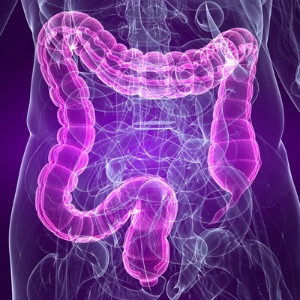 Discussions of the benefits of dietary fiber seem to be everywhere this week.
Discussions of the benefits of dietary fiber seem to be everywhere this week.
From Forbes: Eat Whole Grains For A Long Life, New Study Says
Eating lots of whole grains – especially those high in cereal fiber – may help people live longer, according to new research. The study out in BMC Medicine this week suggests that eating hefty amounts of cereal fibers can help reduce the risk of death from a number of causes, including cancer and diabetes, by almost 20%. Previous research has certainly linked whole grains to the reduction of certain chronic diseases and to reduced mortality, but this one is the largest of its kind to show a reduction in death from a number of different causes. So if you want to live longer, grab a bowl of cereal. The less refined, the better.
Whole grains are grains in their most unadulterated form, still containing the endosperm, bran, and germ – most of the plant’s nutritional value lies in the bran and germ. When grains go through milling to become processed or refined, they’re typically stripped of the bran and germ parts, along with a number of B vitamins, fiber, and iron.
In the new study, the Harvard Medical School team tracked over 367,000 healthy people who were taking part in the NIH-AARP Diet and Health Study, for an average of 14 years. ..It turned out that people who ate more whole grains – 1.2 ounces of per day, on average – had a 17% reduced risk of death, compared to those who ate much less, around 0.13 ounces per day. And when it came to the cereal fiber itself, people who ate the most had a 19% reduced risk of death from any cause, compared to those who ate the least.
The researchers even broke it down by disease: People who ate the highest amounts of whole grains had a 48% reduced risk of death from diabetes, and an 11% reduced risk of dying from respiratory diseases. And people who ate the most cereal fiber had 15% and 34% reduced risk of death from cancer and diabetes, respectively.
The study cannot of course determine causation, since it’s just observational...Still, a number of studies have pointed to a strong connection between whole grains and improved health and longevity in recent years. It may be the anti-inflammatory properties of fiber per se – and its effect of reducing c-reactive protein (CRP) and tumor necrosis factor – that are responsible for their health benefits. If you’re going to up your grain intake, make sure to choose whole ones, like steel cut oats, quinoa, or even whole grain bread, over refined ones like cereal flakes or white bread.
From Scientific American: Fiber-Famished Gut Microbes Linked to Poor Health
Your gut is the site of constant turf wars. Hundreds of bacterial species—along with fungi, archaea and viruses—do battle daily, competing for resources. Some companies advocate for consuming more probiotics, live beneficial bacteria, to improve microbial communities in our gut, but more and more research supports the idea that the most powerful approach might be to better feed the good bacteria we already harbor. Their meal of choice? Fiber.
Fiber has long been linked to better health, but new research shows how the gut microbiota might play a role in this pattern. One investigation discovered that adding more fiber to the diet can trigger a shift from a microbial profile linked to obesity to one correlated with a leaner physique. Another recent study shows that when microbes are starved of fiber, they can start to feed on the protective mucus lining of the gut, possibly triggering inflammation and disease.
"Diet is one of the most powerful tools we have for changing the microbiota," Justin Sonnenburg, a biologist at Stanford University, said earlier this month at a Keystone Symposia conference on the gut microbiome. "Dietary fiber and diversity of the microbiota complement each other for better health outcomes." In particular, beneficial microbes feast on fermentable fibers—which can come from various vegetables, whole grains and other foods—that resist digestion by human-made enzymes as they travel down the digestive tract. These fibers arrive in the large intestine relatively intact, ready to be devoured by our microbial multitudes. Microbes can extract the fiber's extra energy, nutrients, vitamins and other compounds for us. Short-chain fatty acids obtained from fiber are of particular interest, as they have been linked to improved immune function, decreased inflammation and protection against obesity.
Today's Western diet, however, is exceedingly fiber-poor by historical standards. It contains roughly 15 grams of fiber daily, Sonnenburg noted. For most of our early history as hunter-gatherers, we were likely eating close to 10 times that amount of fiber each day. "Imagine the effect that has on our microbiota over the course of our evolution," he said.
Not all helpful fiber, however, needs to come from the roots and roughage for which our ancestors foraged, new research suggests. Kelly Swanson, a professor of comparative nutrition at the University of Illinois at Urbana-Champaign, and his team found that simply adding a fiber-enriched snack bar to subjects' daily diets could swing microbial profiles in a matter of weeks... The findings were published in the January issue of the American Journal of Clinical Nutrition.
As gut microbes are starved of fermentable fiber, some do die off. Others, however, are able to switch to another food source in the gut: the mucus lining that helps keep the gut wall intact and free from infection. In a recent study presented at the Keystone meeting, Eric Martens of the University of Michigan Medical School, postdoctoral researcher Mahesh Desai and their colleagues found that this fuel switch had striking consequences in rodents. A group of mice fed a high-fiber diet had healthy gut lining, but for mice on a fiber-free diet, "the mucus layer becomes dramatically diminished," he explained at the meeting. This shift might sometimes have severe health consequences. Research by a Swedish team, published last year in the journal Gut, showed a link between bacteria penetrating the mucus layer and ulcerative colitis, a painful chronic bowel disease.
A third group of mice received high-fiber chow and fiber-free chow on alternating days—"like what we would do if we were being bad and eating McDonald's one day and eating our whole grains the next," Martens joked. Even the part-time high-fiber diet was not enough to keep guts healthy: these mice had a mucus layer about half the thickness of mice on the consistently high-fiber diet. If we can extend these results to humans, he said, it "tells us that even eating your whole fiber foods every other day is still not enough to protect you. You need to eat a high-fiber diet every day to keep a healthy gut." Along the same lines, Swanson's group found that the gut microbiomes of his adult subjects reverted back to initial profiles as soon as the high-fiber bars were discontinued.

 How much fiber is there in the different foods we eat? And how much should we eat? Recent posts (
How much fiber is there in the different foods we eat? And how much should we eat? Recent posts ( My last post
My last post  In the past year I keep coming across one special gut microbe: Faecalibacterium prausnitzii. This bacteria is considered beneficial and is one of the most prevalent intestinal bacterial species in healthy adults. The reduction of this bacteria in the gut (as measured by analyzing bacteria in fecal samples) is seen in several diseases, including Intestinal Bowel Disease (IBD). This bacteria has also been found to be anti-inflammatory. In other words, you really, really want a healthy population in your gut.
In the past year I keep coming across one special gut microbe: Faecalibacterium prausnitzii. This bacteria is considered beneficial and is one of the most prevalent intestinal bacterial species in healthy adults. The reduction of this bacteria in the gut (as measured by analyzing bacteria in fecal samples) is seen in several diseases, including Intestinal Bowel Disease (IBD). This bacteria has also been found to be anti-inflammatory. In other words, you really, really want a healthy population in your gut. Healthy women were followed during their pregnancies and postpartum, and it was found that vaginal microbial communities change over the course of pregnancy, and then really change postpartum. They also found differences in the predominant Lactobacillus bacteria species between the women. In this study it was found that Lactobacillus bacteria were most dominant during pregnancy, especially L. gaserii, L. crispatus, L. iners, and L. jensenii, and there were ethnic differences in the species. And they found that the vaginal microbiome changes postpartum, with bacteria becoming more diverse and the numbers of Lactobacillus dropping. The message here is that what are "normal and healthy" microbial communities can vary between women (in this study
Healthy women were followed during their pregnancies and postpartum, and it was found that vaginal microbial communities change over the course of pregnancy, and then really change postpartum. They also found differences in the predominant Lactobacillus bacteria species between the women. In this study it was found that Lactobacillus bacteria were most dominant during pregnancy, especially L. gaserii, L. crispatus, L. iners, and L. jensenii, and there were ethnic differences in the species. And they found that the vaginal microbiome changes postpartum, with bacteria becoming more diverse and the numbers of Lactobacillus dropping. The message here is that what are "normal and healthy" microbial communities can vary between women (in this study